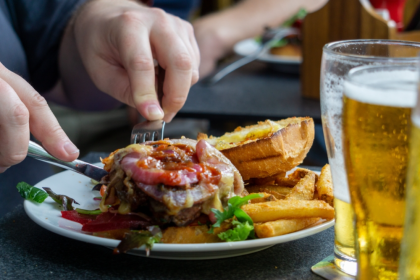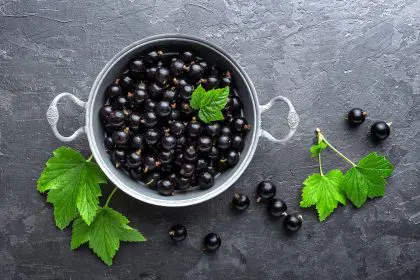That mid-afternoon energy crash has you reaching for another coffee or something sweet to power through the rest of your day. But what if you could maintain steady energy levels without the rollercoaster ride your blood sugar takes after that chocolate bar or energy drink? The solution might be simpler than you think and starts right on your plate.
Why your energy crashes in the first place
That familiar afternoon slump isn’t just about needing more sleep. It’s often the direct result of what you ate hours earlier. When you consume foods that rapidly convert to sugar in your bloodstream, your body responds with a quick insulin release to manage the sudden glucose influx. This insulin surge efficiently clears sugar from your blood, but often overshoots, leaving your blood sugar lower than before you ate.
This blood sugar rollercoaster explains why you feel energized shortly after eating certain foods, only to crash an hour or two later, feeling even more tired and foggy-headed than before. Your brain, which relies heavily on glucose for fuel, sends urgent hunger signals when blood sugar drops, creating cravings for the very foods that restart this exhausting cycle.
For those with diabetes or prediabetes, these blood sugar swings present even greater challenges, potentially leading to serious health complications over time. But even for people with normal glucose metabolism, the energy fluctuations can significantly impact productivity, mood, and overall wellbeing.
The glycemic index decoded
Understanding the glycemic index helps explain why some foods sustain energy while others lead to crashes. This numerical system ranks foods based on how quickly they raise blood sugar levels compared to pure glucose. Foods with high glycemic index values cause rapid blood sugar spikes, while low-glycemic foods release energy gradually.
White bread, processed breakfast cereals, and white potatoes rank high on this scale, causing quick energy surges followed by inevitable crashes. In contrast, foods like lentils, non-starchy vegetables, and most whole fruits rank lower, providing sustained energy without dramatic blood sugar fluctuations.
However, the glycemic index tells only part of the story. The glycemic load considers both the quality of carbohydrates and the quantity consumed, providing a more complete picture of how a food affects blood sugar. A watermelon has a relatively high glycemic index but a low glycemic load when eaten in reasonable portions because of its high water content and moderate carbohydrate amount.
Fiber-rich foods for lasting power
Fiber acts as your energy system’s best friend by slowing digestion and preventing rapid blood sugar spikes. Foods naturally rich in fiber typically provide carbohydrates in forms that take longer to break down, resulting in gradual, sustained energy release.
Leafy greens like spinach, kale, and arugula contain minimal impact carbohydrates alongside valuable fiber, making them excellent energy-sustaining foods. Despite their low calorie content, their complex nutrient profile supports cellular energy production without blood sugar disruption.
Berries provide the perfect example of how fiber transforms a sweet food into an energy-stabilizing powerhouse. Raspberries, blackberries, and strawberries contain natural sugars but deliver them alongside seeds and fibrous flesh that slow sugar absorption. A cup of berries provides the sweet satisfaction your taste buds crave while giving your body steady, measured fuel.
Beans and lentils perhaps deserve the greatest recognition for blood sugar-friendly energy support. Their remarkable combination of fiber, complex carbohydrates, and protein creates what nutrition experts sometimes call the “time-release capsule” effect for energy. A lunch featuring black beans or lentils often sustains energy levels throughout the afternoon, eliminating the need for stimulants or sweet pick-me-ups.
Protein pairs for perfect energy balance
Protein serves as another powerful tool for maintaining energy levels without blood sugar spikes. This macronutrient barely affects blood glucose while slowing the absorption of carbohydrates consumed alongside it. Additionally, protein helps build and maintain lean muscle mass, which improves overall metabolic health and energy utilization.
Eggs represent one of the most versatile protein options for steady energy. Their high-quality protein combined with healthy fats creates lasting satiety while providing nutrients that support brain function and energy production. Research shows that people who eat eggs for breakfast typically experience more stable blood sugar and energy levels throughout the morning compared to those who choose carbohydrate-heavy breakfast foods.
Greek yogurt offers another convenient protein source that helps maintain steady energy levels. Its protein content significantly exceeds that of regular yogurt, and when chosen in unsweetened varieties, it minimizes blood sugar impact. Adding your own fresh berries or a sprinkle of nuts creates a balanced snack that powers you through long stretches between meals without energy fluctuations.
Plant proteins like tempeh, tofu, and edamame deserve special mention for their dual benefits of protein and fiber. These soy-based foods provide complete protein comparable to animal sources while containing fiber that animal proteins lack. This combination makes them particularly effective for blood sugar management and sustained energy.
Healthy fats for fuel efficiency
While carbohydrates provide your body’s preferred quick energy source, fats offer more concentrated, longer-burning fuel. Including healthy fats in your diet helps moderate blood sugar response while providing sustained energy, particularly for your brain and nervous system.
Avocados stand out for their unique fat profile and blood sugar-friendly composition. Despite their creamy richness, avocados contain minimal sugar and substantial fiber that slows digestion. Their monounsaturated fats support brain health and energy metabolism without stimulating insulin release.
Nuts and seeds provide convenient energy that travels well without refrigeration. A small handful of almonds, walnuts, or pumpkin seeds delivers protein, fiber, and healthy fats that maintain energy levels while supporting overall metabolic health. Their balance of nutrients makes them particularly valuable between meals when energy typically wanes.
Olive oil and other healthy cooking fats can transform otherwise quickly-digested foods into more blood sugar-friendly options. Adding olive oil to bread or vegetables slows carbohydrate absorption, blunting potential blood sugar spikes. The combination of flavor satisfaction and metabolic benefits makes healthy fats essential components of an energy-sustaining eating pattern.
Timing strategies that maintain energy all day
Beyond choosing the right foods, when you eat significantly impacts energy levels and blood sugar stability. Large meals with substantial carbohydrates require more insulin and often lead to post-meal drowsiness, even when those carbohydrates come from healthier sources.
Eating smaller, more frequent meals and snacks that combine protein, fiber, and healthy fats helps maintain consistent energy without taxing your digestive system or triggering excessive insulin release. This approach particularly benefits people with insulin resistance or diabetes who experience more pronounced energy dips after eating larger meals.
Front-loading calories earlier in the day aligns with your body’s natural metabolic rhythm. Research indicates that identical meals consumed at breakfast versus dinner produce different blood sugar responses, with morning consumption resulting in lower glucose elevations. This suggests that enjoying your more substantial meals earlier may support better energy levels throughout the day.
Hydration matters more than you think
Dehydration often masquerades as fatigue, creating energy dips that have nothing to do with blood sugar. Even mild fluid deficits affect cognitive function and physical performance before thirst becomes noticeable.
Plain water remains the gold standard for hydration without blood sugar impact. Adding cucumber slices, berries, or citrus wedges can enhance flavor without adding significant calories or triggering insulin response.
Herbal teas provide warming options during colder months while supporting hydration without affecting blood sugar. Varieties like peppermint and ginger can actually enhance alertness and digestive function without caffeine or sweeteners that might disrupt energy levels.
The surprising impact of certain vegetables
Non-starchy vegetables deserve special recognition for their energy-supporting benefits without blood sugar concerns. These plant foods provide vital nutrients that support cellular energy production while containing minimal digestible carbohydrates.
Cruciferous vegetables like broccoli, cauliflower, and Brussels sprouts deliver substantial nutrition that supports metabolic health without raising blood sugar levels. Their fiber content and complex cellular structure require more digestion time, resulting in gradual nutrient release that supports sustained energy.
Colorful bell peppers, tomatoes, and leafy greens contain antioxidants that protect mitochondria, your cells’ energy-producing components. By supporting these cellular power plants, these vegetables enhance energy production efficiency at the most fundamental level, helping you feel more energetic without blood sugar fluctuations.
The humble mushroom, technically not a vegetable, offers unique energy benefits through compounds that support adaptogenic function. Varieties like shiitake, maitake, and even common button mushrooms contain nutrients that help your body adapt to stress while supporting steady energy production without affecting blood sugar levels.
With thoughtful food choices and strategic timing, you can maintain vibrant energy levels throughout your day without the crashes that accompany blood sugar spikes. Your body naturally functions best with steady fuel supply rather than dramatic energy surges followed by inevitable crashes. Choosing foods that provide this steady nourishment transforms not just your energy levels but your overall health and wellbeing.















